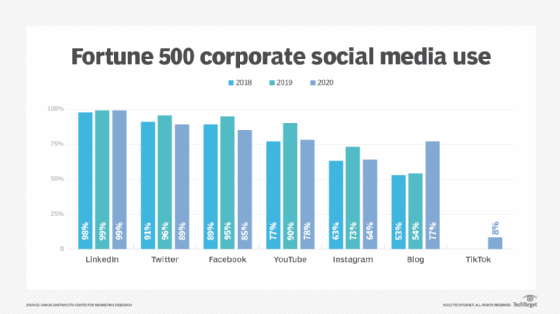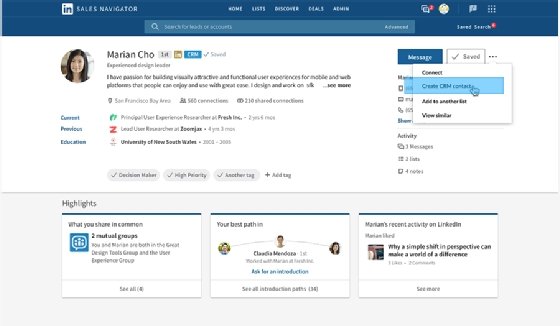What is LinkedIn?
LinkedIn is a social networking site designed specifically for the business community. The goal of the site is to enable registered members to establish and document networks of people they know and trust professionally.
LinkedIn is also a resource for professionals to find jobs, research companies, and get news about their industry and business connections.
LinkedIn gathers data across LinkedIn profiles to provide policymakers, employers, workers and educators with data-driven insight into patterns that help align workforce supply with demand worldwide.
Such patterns include when people generally look for the next step in their career, work migration trends in specific geographical locations, skills gaps in specific industries and what cities are "stickiest," i.e., areas that employees are less likely to move away from.
What is the difference between LinkedIn and other forms of social media?
LinkedIn is different from other social networking sites, like Facebook, Twitter and Instagram, in that it is designed specifically with business networking in mind.
It's a more closed network, where members usually only connect with people they already know or have been introduced to by someone in their network. This makes LinkedIn ideal for building professional relationships, as opposed to personal ones.
That being said, LinkedIn does offer some features that are similar to other social networks, such as groups and discussion forums.

Who created LinkedIn?
LinkedIn was co-founded by Reid Hoffman, former executive vice president in charge of business and corporate development for PayPal.
The site, which was launched in May 2003, currently has over 850 million members -- around 191 million from the U.S. -- with over 58 million registered in over 200 countries and territories. According to Reid Hoffman, nearly 30% of LinkedIn subscribers are recruiters.
Microsoft acquired LinkedIn in June 2016 for $26.2 billion. According to some experts, the rich troves of semistructured data that LinkedIn's members freely give away -- job titles, geographies, industry information, skill sets, etc. -- made the deal a steal, even though the LinkedIn acquisition was one of Microsoft's more expensive purchases to date.
Why use LinkedIn?
LinkedIn is used primarily by three groups of people: individuals, sales reps and recruiters:
- For individuals, LinkedIn is a great way to manage your career, find a job, research companies, connect with business contacts and get news about your industry.
- Salespeople often used LinkedIn to generate leads and build relationships with potential customers.
- Recruiters use LinkedIn to find candidates for open positions, research companies and connect with potential employees.

How does membership to LinkedIn work?
A LinkedIn member's profile page, which emphasizes skills, employment history and education, has professional network news feeds and a limited number of customizable modules that enable you to showcase skills, qualifications and job history, as well as references from colleagues and previous employers.
Basic membership for LinkedIn is free. Network members are called "connections." Unlike other free social networking sites, LinkedIn encourages connections to have a preexisting relationship.
What does a LinkedIn Premium subscription offer?
In addition to the features available to basic members, LinkedIn Premium subscriptions offer a number of features designed to help users be more productive and successful in their careers.
Some of these features are the following:
- InMail messages can be sent to any member, even if you are not connected to them. This is a strong feature for recruiters who often reach out to candidates they don't know personally during recruitment sessions.
- Advanced search filters enable users to narrow their search results to find exactly the right person they are looking for.
- Profile views enable you to see who has viewed your profile and when. This is helpful when members are searching for new employment opportunities and want to know potential companies that might be reviewing their profile.
- Sales Navigator is a tool designed specifically for salespeople that provides access to leads, account details and contact information.

How can someone sign up for a LinkedIn account?
See the following step-by-step instructions to sign up for a LinkedIn account:
- Go to linkedin.com, and click Join now. You are asked to enter your first name, last name and email address, as well as to create a password. You are also asked to select your country/region and primary language.
- After you have entered all of the required information, click Join LinkedIn. You are then taken to a page where you can complete your profile by adding additional information about your work experience, education, skills and interests.
- Once you have completed your profile, you can start connecting with other LinkedIn members.
Best practices for creating your LinkedIn profile
While the process for signing up for a LinkedIn account is relatively simple, there are a few best practices you want to keep in mind to create an effective LinkedIn profile:
- Be sure to use a professional photo as your profile picture. This helps you make a good first impression on potential employers or business contacts.
- In the About section of your profile, be sure to include a brief overview of your experience and skills. This is a great way to give potential employers or customers a snapshot of who you are and what you can do.
- In the Experience section of your profile, be sure to list all relevant work experience, including job titles, dates of employment and descriptions of your responsibilities.
- In the Education section of your profile, be sure to list all relevant educational degrees and coursework.
- In the Skills section of your profile, be sure to list any relevant skills or qualifications you may have. These could include things like proficiency in certain software programs or languages.
- Be sure to connect with other LinkedIn members who you know and trust. This helps you build your network and expand your reach on the site.
- Finally, don't forget to regularly update your LinkedIn profile as your experience and skills grow and ask the appropriate colleagues to give you a professional endorsement -- and be sure to provide them with one in return. This helps ensure that your profile is always up to date and eye-catching.
Explore employee experience experts to follow on social media, learn top AI recruiting tools and software and read our guide to developing social media recruiting strategies.
